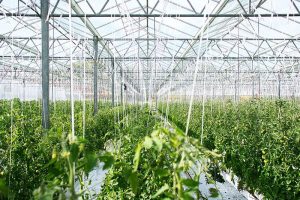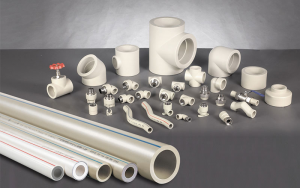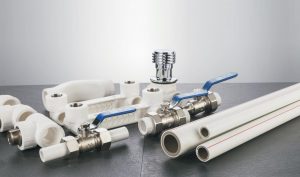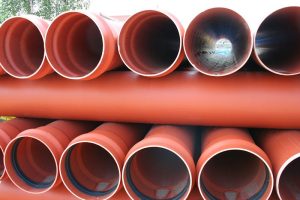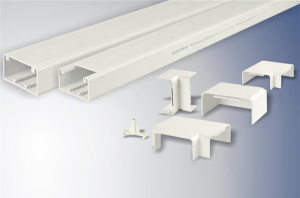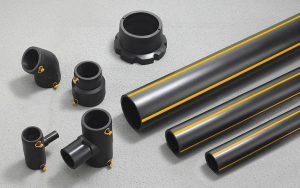Table of Contents
Drainage systems are important in urban infrastructure, as they are responsible for efficiently draining rainwater, sewage, and industrial wastewater from urban areas. An efficient water drainage system prevents flooding, reduces environmental pollution, and ensures the quality of life of citizens.
Aging or damaged pipes are prone to cause urban waterlogging during extreme weather, highlighting the need for advanced drainage solutions and high-quality drainage pipe materials. This article will introduce situations needing pipe replacement as well as a guide to choosing pipes. Read ahead for more information!
Common Issues with Low-quality Pipe Drainage Solutions
When do you need to replace the pipe drainage solutions? The following are common issues that may arise from using unsuitable or low-quality pipes:
1. Pipe Leakage
Over time, pipe drainage solutions may age and crack due to exposure to harsh environments. Low-quality joints and seals can fail under temperature changes, causing water leakage.
Pipe leakage not only leads to the wastage of water resources but may also cause soil erosion and foundation damage. Long-term leakage can harbor bacteria and mold, threatening public health and safety.
2. Pipe Blockage
Drainage pipes with rough inner walls are prone to accumulate grease, mud, and other foreign objects, leading to poor drainage and, in severe cases, complete blockage.
Frequent pipe blockage can affect drainage efficiency, causing problems such as sewage backflow and waterlogging and reducing the quality of life. In addition, cleaning pipes will cost a lot of time and resources, which increases maintenance costs.
3. Maintenance Difficulties
Selecting inappropriate pipe materials can easily lead to corrosion, wear and tear of pipes, and increase the frequency of repairs. In addition, frequent excavation and maintenance may cause secondary damage to urban roads and infrastructure.
This not only increases the economic burden but may also lead to frequent interruptions in the water drainage solutions, affecting industrial production and the daily lives of residents.
4. Safety Hazards
Ground subsidence is a geological phenomenon or process caused by the consolidation and compression of underground loose strata due to natural factors or human activities. Such changes may lead to stress concentrations at pipe joints. Thus, poorly connected pipes are susceptible to the risk of leakage.
Natural disasters such as typhoons, earthquakes, and heavy rainfalls also often cause pressure changes in pipe drainage solutions. Drainage pipes can be overloaded, causing ruptures or even explosions.


How to Choose Drainage Pipes?
When selecting drainage pipe solutions for different drainage systems, considering the material properties of the pipes is the first step. Here are some tips:
1. Domestic Sewage
Domestic sewage mainly comes from homes, commercial buildings, and public facilities. It contains a lot of organic matter, grease, and suspended matter. The flow and composition of this wastewater change frequently, but it is less chemically corrosive to pipes. Therefore, easy-to-install PVC or HDPE pipes with smooth inner walls and versatile uses are recommended.
- PVC pipe has a smooth inner wall and is not affected by electrochemical reactions caused by acids, bases, and salts. PVC drain fittings and pipes are lightweight and can be installed with solvent cement and gasketed joints. The service life can reach more than 50 years under proper use.
- HDPE pipe is flexible and resistant to cracking and impact. It uses fusion joints to ensure the consistency of the whole piping system. The lifespan can also exceed 50 years.
2. Industrial Wastewater
Industrial wastewater contains corrosive, hazardous, and difficult-to-degrade pollutants that must be treated before discharge. This type of wastewater has high requirements for chemical and temperature resistance of pipe drainage solutions. Therefore, PVC and CPVC pipes with good corrosion and temperature resistance can be selected.
- PVC drainage pipes are also widely used in industrial applications, and they can handle the vast majority of industrial wastewater, except for strong acid and alkali liquids.
- CPVC pipes are capable of treating high temperatures up to 95-100 °C and are known for their excellent chemical resistance. It is, therefore, commonly used in hot water supply and industrial liquid handling.
3. Rainwater
Rainwater is relatively clean but has a high flow rate and strong impact, especially during heavy rainfall. In addition, rainwater may contain small amounts of leaves, mud, sand, and other foreign objects. Therefore, PVC, HDPE, and UPVC pipes with high strength, good aging resistance, and smooth inner walls can be chosen.
- PVC drainage pipes and fittings are economical and durable, with high intensity. They are widely used in rainwater drainage systems.
- HDPE pipes are lightweight, flexible, easy to handle and install, and can be used as underground pipes.
- UPVC pipe is inexpensive, has high strength, is resistant to aging, and can be exposed to outdoor environments.


Where to Order Pipe Drainage Solutions?
LESSO is an experienced drainage pipe supplier known for superior product quality and a wide range of product lines. Our drainage pipes in PVC, HDPE, UPVC, and other materials offer excellent chemical, wear resistance, and impact resistance to meet the needs of different water drainage systems.
Our pipes are easy to install, simple to maintain, and can be used for over 50 years under proper use. Whether it’s domestic sewage, industrial wastewater, or rainwater drainage, you can find the right solutions at LESSO.
Conclusion
In conclusion, when selecting water drainage solutions, it is necessary to comprehensively consider the characteristics of wastewater and the performance of pipe materials to select pipes that meet specific requirements, such as determining “what PVC pipe to use for drainage?”
If you are looking for a supplier of drainage solutions, contact LESSO now to obtain consistent and durable products to ensure the long-term, reliable operation of the water drainage system.



